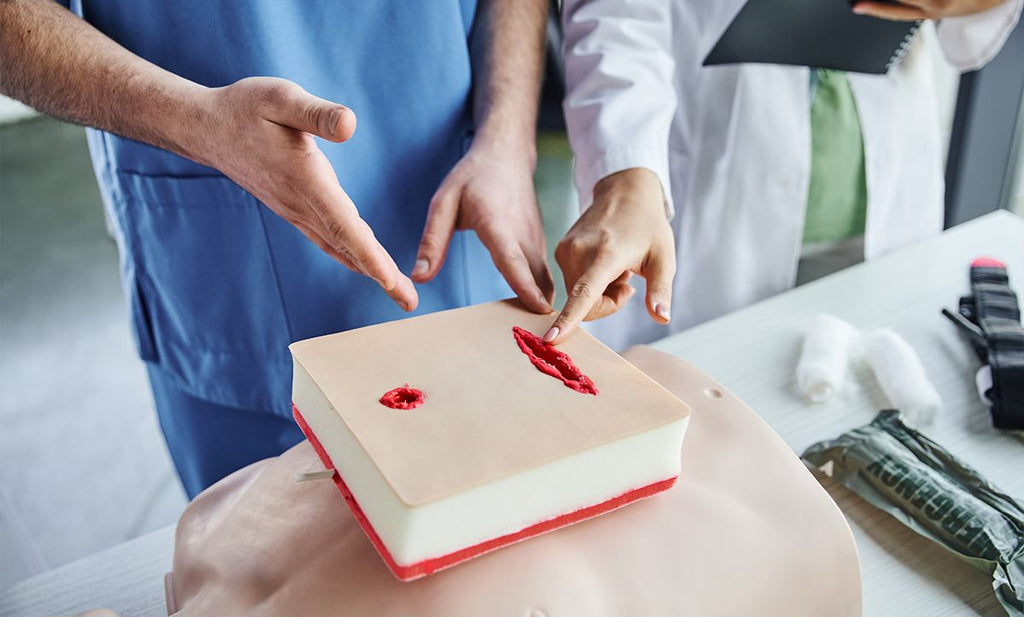Wound healing is a complex biological process that depends on various factors, including moisture levels, infection control, and the body’s ability to regenerate tissue. While some treatments support faster healing, others can slow it down. Understanding what works and what doesn’t help ensure wounds heal efficiently with minimal risk of complications.
The Stages of Wound Healing
The body repairs wounds through a step-by-step process that includes:
- Clot Formation – The body stops bleeding by forming a protective barrier over the wound.
- Inflammatory Response – The immune system removes bacteria and damaged cells to prevent infection.
- Tissue Growth – New skin cells form, and the wound starts to close.
- Skin Strengthening – Collagen rebuilds the skin, making it stronger over time.
When healing is disrupted by infection, poor circulation, or improper wound care, the process slows down, increasing the risk of complications.
What Works: Effective Methods for Fast Wound Healing
✔ Keeping the Wound Moist
Research supports moist wound healing, which allows new cells to develop faster than in a dry environment. Using moisture-balancing hydrofiber or silicone dressings helps protect the wound and encourage skin regeneration.
✔ Choosing the Right Dressing
Using the proper dressing prevents scabbing, reduces infection risk, and promotes faster tissue repair. Collagen-based, hydrofiber, or antimicrobial dressings are designed to create an ideal healing environment.
✔ Maintaining Clean Wound Care
Preventing infection is crucial for fast healing. Cleaning the wound with sterile saline solution and applying an appropriate dressing reduces bacterial growth and promotes recovery.
✔ Supporting Healing with Proper Nutrition
Nutrients like protein, Vitamin C, and Zinc are essential for cell regeneration. A balanced diet and proper hydration play a vital role in how efficiently the body repairs damaged skin.
✔ Protecting the Wound from Excessive Pressure
Wounds in high-contact areas (like feet or joints) need extra protection to prevent reopening. Reducing friction and pressure using soft dressings, padding, or specialized wound care products can support healing.
✔ Changing Dressings Correctly
Frequent dressing changes can disrupt new tissue formation, but leaving a dressing on for too long can increase infection risk. Following dressing change guidelines ensures the wound stays clean and heals properly.
What Doesn’t Work: Common Healing Mistakes
✖ Allowing the Wound to Dry Out
A dry wound forms thick scabs that slow down skin regeneration. Moist healing environments help wounds close faster with less scarring.
✖ Using Harsh Chemicals
Hydrogen peroxide, iodine, and alcohol can irritate the wound and damage surrounding skin, slowing down recovery. Saline solution or gentle cleansers are better alternatives.
✖ Picking at Healing Skin
Removing healing skin too soon reopens the wound and restarts the healing process, increasing the risk of infection. Using a protective dressing reduces the temptation to pick at wounds.
✖ Choosing the Wrong Type of Dressing
Some wounds require absorbent dressings, while others need moisture-retaining solutions. Using the wrong dressing can lead to excessive dryness or moisture buildup, slowing recovery.
✖ Ignoring Underlying Health Issues
Conditions like diabetes, poor circulation, and weakened immunity can significantly impact healing time. If wounds take longer than expected to close, a healthcare provider should assess the cause.
CelluHeal: Supporting Faster, Safer Wound Healing
Using the right wound care products ensures a faster and more effective healing process. CelluHeal dressings provide:
✔ Moisture-balanced wound care with hydrofiber and hydrocolloid dressings
✔ Infection prevention with antimicrobial options
✔ Tissue repair support using collagen-based dressings
By following scientifically proven wound care methods and avoiding common mistakes, you can speed up healing while reducing the risk of complications. Whether treating a minor cut, a surgical wound, or a chronic wound, proper care leads to better outcomes and healthier skin.

